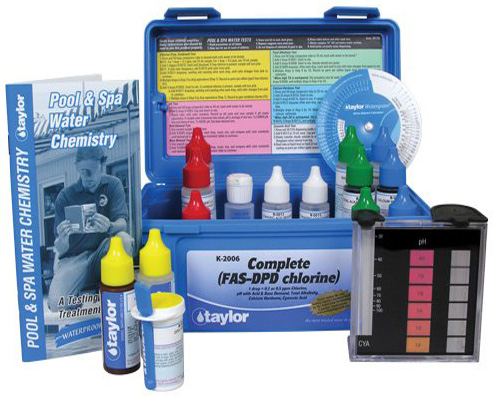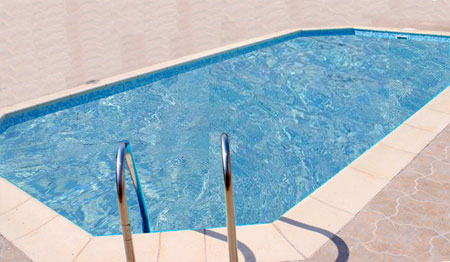The contaminants are responsible for swimming pool water problems. Most of the problems are directly related to our health. Therefore, it is essential to testing and correcting the pool water regularly. Without testing you are not able to identify a particular problem accurately. The pool water maintenance is one of the biggest challenges for the pool owners or operators. Inadequate knowledge and careless would brings the result of pool water problems. If we are not able to maintenance properly, then the health of our families are in danger.
Common swimming pool water problems
Cloudy swimming pool water
The presence of small particles in the water can create cloudiness. The main problems of cloudy water are improper filtration, insufficient water circulation, reduce flow rate, looks ugly etc.
Algae problems
creates Green cloudy water, Black (spongy) spots, Pink or white slime etc. The algae itself is not dangerous but it provides nutrients to bacteria and micro-organisms that are responsible for different disease.
Chlorination problems
The chlorine level may be low or high. Low chlorine can create algae problem, bacteria or microorganism problem. On the other hand high chlorine level can creates burning eyes and nose.
Staining of the pool
Although staining is not harmful for health but it reduce the attraction of the swimming pool. Therefore swimmers do not feel comfort to swimming.
Dust, sand etc
It will creates brown cloudy water.
Iron and copper problem
If the copper level is high, it can lead to green hair, fingernails, pool walls and water, as well as pool staining. High concentrations of iron can damage or discoloration of the pool surface.
Manganese problem
It can create stains on pool plaster and tile grouting.
TDS problem
TDS means total dissolved solids including debris, salts, chemicals, body fat etc. It increases with chemical addition in the pool. Higher TDS can create water clarity problem, stains on tile and plaster, scaling, salt taste, trouble to keep chlorine level and disturbance in water balance.
Others problem
- Hardness especially calcium hardness
- Overall health problem including Burning eyes and nose
- Microorganisms including bacteria and viruses
Sources of the swimming pool water problems
There are many sources that create problems of pool water. The Water problems and pollution is interrelated which comes from environment, animals, wildlife or chemicals into the pool or carried by the swimmers. Some sources of the swimming pool water problems are described below:
Swimmers
Human body may contain microorganisms, sand, dusts etc. Moreover they use different types of cosmetics, oils. When they are swimming in the pool, then these unwanted contaminants get entered into the pool water. Human urine may also the pollutants of the water.
Environment around the pool
The environment around the pool can pollute the pool water. It contains different sorts of debris like dust, sand, leaves, grass, pollen, spores which can easily go into the water by the wind or other ways.
Animals and wildlife
Many animals including pets and wildlife may also the source of the pool water pollution. Occasionally the wildlife like frogs, lizards or insects may die in the swimming pool and would pollute the water.
Lack of proper maintenance
Lack of proper swimming pool maintenance, uses of over doges and poor quality chemicals are another source of swimming pool water problems.
Source of fresh water
Sources of water may be another source of contaminants in pool water. Sometimes the pool operators have to take some fresh water. If this water contains different contaminants, then it will also reduce the water quality of swimming pool.
Swimming pool water quality
It is recommended that your Swimming pool water should to maintain that are suggest as below:
- Smell: water should not contain any bad smell.
- pH value: The optimum pH value for pool water is 7.4; so try to maintain within the range 7.0 to 7.6. The pH value indicates the acidity or alkalinity of pool water. Both the lower or higher pH value can damage pool equipment, cause skin discomfort, and irritate the skin and eyes. Moreover it can effects on chlorine consumption.
- Free chlorine: It should be keeping between from 0.5 to 1.5 ppm
- Total alkalinity (TA): for public pools 80-120 ppm. It acts as a buffer and prevents the pH from fluctuation. These ranges of total alkalinity value may also increases equipment life and help the sanitizers so that they can work effectively.
- Hardness (calcium hardness): acceptable range 100 – 300 ppm. The range can varies depends on the type and surface materials of the pools. High hardness is responsible for scale formation and circulation distress whereas the lower hardness can responsible for corrosion.
- Stabilizer (Cyanuric Acid): 25-50 ppm
- Total Bromine: 2-3 ppm
- Temperature: 21 ⁰C to 32 ⁰C
- TDS level: The maximum acceptable level is 1,500 ppm
- Copper: maximum level 1.0ppm
- Iron: maximum 0.3 ppm
swimming pool water testing
For maintaining water quality properly, testing is part and parcel of every pool owners. They have to test pool water regularly (daily, weekly or monthly) to avoid unwanted swimming pool water problems. It should be ensure that the chlorination, pH level, total alkalinity, TDS, iron, copper and calcium hardness level are exact as quality water rages. If your pool is salt water pool, then you also have to test salt levels. All the parameter should have not to check daily, some of them have to check weekly whereas some of them need to test monthly. Consequently you can able to detect the changes of water quality before problems develop. The water quality may differ from state to state. It is recommended that the pH and chlorine levels check daily basis before the first swim of the day. Rests of the parameters of pool water have to test weekly. If your fresh water sources are free from any metals and there is no possibility to entered, then the tests for those metals are unnecessary.
You will get many good pool water test kit at different market places but it should be reliable. It is advice that always keeps the pool kit in a cool dry place, out of sunlight and outside the reach of children. You can buy following swimming pool water test kit at Amazon.

Most of the swimming pools water problems can be avoided by maintained water quality. If you not able to maintained water quality then it would be harmful to the pool materials and equipment above all simmers health.

You should be very careful when measuring free chlorine in anything that has been used to test total chlorine. Even rinsing out several times does not eliminate the risk.
Potassium iodide, present in DPD No.3 tablets and HR Chlorine tablets need to be present in only a few molecules to cause interference so the result you get is closer to total chlorine. This is because it acts as a catalyst in the reaction of chloramines with DPD, and does not have to present in the level required to release iodide concentration.n the quantity related to the total chlorine.
It is best to keep one cell/test block etc for FREE CHLORINE only.
This is some great information, and I appreciate your point that your pool water shouldn’t smell bad. I opened my pool for this season a week ago, and when I went outside this morning, the water smelled really weird. I’ll definitely look into having the water tested to see what the problem is before I let anyone swim in it. Thanks for the great post!